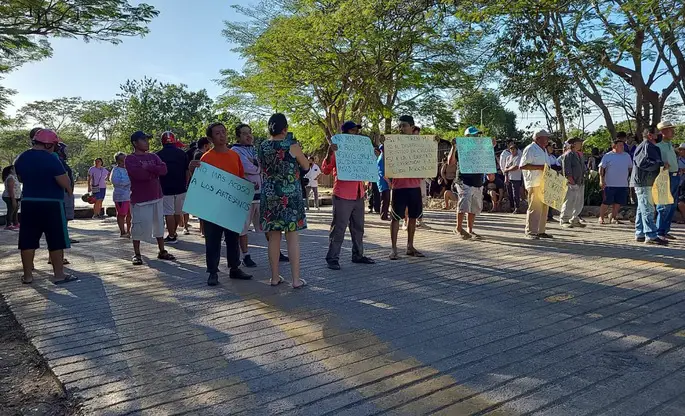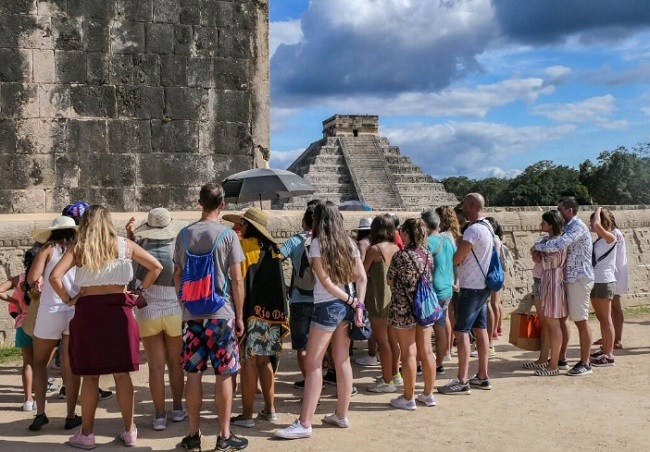The protesters—farmers, artisans, and tourist guides—accused the director of Chichén Itzá of discrimination and mistreatment.
MÉRIDA, Yuc., January 12, 2023.- Mayan indigenous people from the communities of the municipality of Tinum, in the state of Yucatán, southeastern Mexico, removed this Wednesday a blockade on the roads that lead to the archaeological zone of Chichén Itzá, after 10 days of protests.
According to figures from the National Institute of Anthropology and History (INAH), during that period, the most visited archaeological zone in Mexico stopped receiving some 80,000 national and foreign tourists, causing serious economic losses.
“We have reached an agreement with the representative of the federal government Andrés Peralta Rivera so that we lift the blockade and get to work,” Arturo Ciau Puc, a rural teacher who mediated the conflict, told EFE.
The blockade of the federal highway Valladolid-Mérida, at the height of the Mayan communities of Pisté, Xcalakoop, and San Felipe Nuevo, began on January 2 due to the demand of peasants, artisans, and tourist guides to dismiss the director of Chichén Itzá, Marco Antonio Santos Ramírez, whom they accused of discrimination, mistreatment and attacking the Mayan culture.
In the signed agreement, the dismissal of the archaeologist from the National Institute of Anthropology and History (INAH), Santos Ramírez, “but it will be within eight days” stands out.
The peasants and the representative of the federal government in Yucatan drew up a draft that was taken to Mérida, the Yucatecan capital, for the INAH authorities to sign.
“Now we are removing stones, ropes, banners, logs, and other tools that they used so that no vehicle passes,” the mediator reported.
The peasants, who had lost hope before the apparent disinterest of the president of Mexico, Andrés Manuel López Obrador, for him to intervene in the conflict, considered that the response of the federal government was not a triumph.
“It is an act of justice, it is the solution to a dignified treatment, we were already tired of the arrogance of the director of the archaeological zone of Chichén Itzá who violated our rights as indigenous people,” Ciau Puc explained.
He considered that it worked due to the unity among the inhabitants of Pisté, Xcalakoop, San Felipe Nuevo “and all the communities of Tinum.”
For his part, the director of the INAH Yucatán Center, José Arturo Chab Cárdenas, confirmed the end of the blockade and the reopening of the Mayan city declared a World Heritage Site since 1988 and where the Kukulcán Castle is located, one of the new seven wonders of the modern world.

“Thanks to the efforts made by the Ministry of the Interior, access to the Valladolid-Mérida highway was achieved: tourists will be able to enter the site starting tomorrow,” he added.
One point also stands out in the agreements, that every 15 days there will be a meeting so that problems are solved on the fly, “it is not convenient for us to close every so often, but if they do not respect the agreement in eight days, we will have to return to close”.
The conflict caused serious losses to the region’s tourist servers and to the INAH itself, which annually receives 2.6 million visitors to the archaeological zone of Chichén Itzá.
TYT Newsroom


